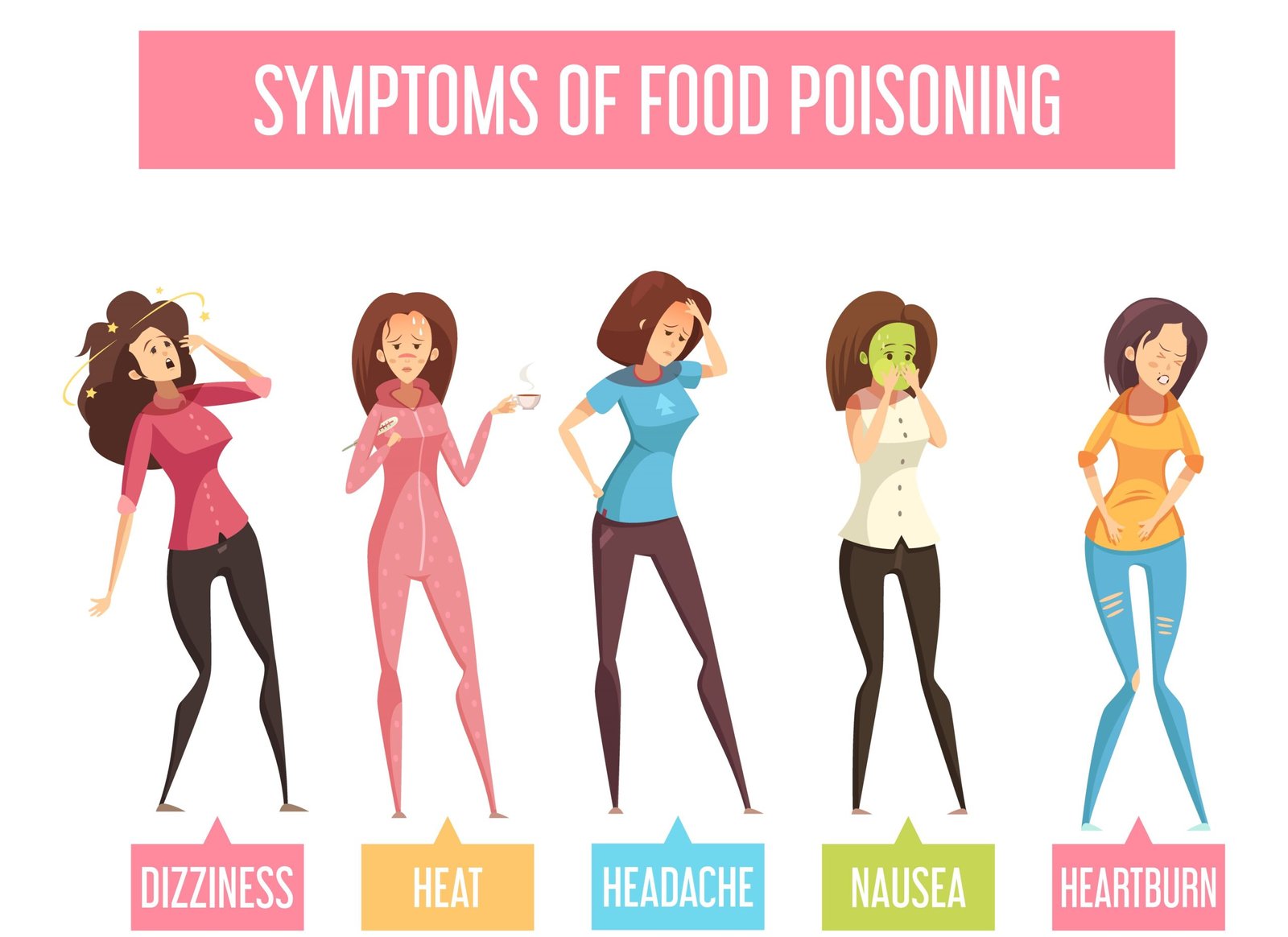
Introduction
Imagine enjoying a delicious meal at your favorite restaurant or savoring a homemade dish only to be hit with nausea, vomiting, and stomach cramps shortly afterward. Unfortunately, this scenario isn’t uncommon, and it’s often a result of food poisoning. In this blog, we’ll explore the world of foodborne illnesses, understanding what causes them, how to recognize the symptoms, and most importantly, how to prevent and treat them. Let’s dive in!
What is Food Poisoning?
The Culinary Culprits Unveiled
Food poisoning, or foodborne illness, occurs when you consume contaminated food or beverages. These can be tainted by harmful bacteria, viruses, parasites, or chemical substances. Food poisoning can range from mild discomfort to severe health issues and is a significant concern in both developed and developing countries.
Causes of Food Poisoning
Behind the Scenes of a Foodborne Outbreak
Food poisoning can strike when you least expect it. Here’s what can lead to those unpleasant symptoms:
- Contaminated Food Sources: Raw or undercooked animal products like meat, poultry, and seafood are common culprits. Fruits and vegetables can also be contaminated during growth or harvesting.
- Unsafe Food Handling and Preparation: Poor hygiene practices in the kitchen, such as not washing hands, can introduce harmful pathogens to your meals.
- Cross-Contamination: When raw and cooked foods come into contact, the transfer of harmful microorganisms can occur. This often happens on cutting boards, utensils, and countertops.
- Food Storage Issues: Storing food at incorrect temperatures, whether too warm or too cold, can encourage bacterial growth.

Symptoms of Food Poisoning
How Your Body Reacts to Foodborne Invaders
Food poisoning can manifest in various ways. The symptoms you experience depend on the specific pathogen involved, but here are some common signs:
- Gastrointestinal Symptoms: These include nausea, vomiting, diarrhea, abdominal pain, and cramps. They often appear within hours of consuming contaminated food.
- Non-Gastrointestinal Symptoms: Some foodborne illnesses can cause fever, headaches, muscle aches, and fatigue.
- Severity and Duration: The severity and duration of symptoms can vary widely. While some cases are mild and resolved within a day or two, others can be severe and persist for weeks.
Common Pathogens
Meet the Troublemakers
Several pathogens are notorious for causing food poisoning. Here are a few of the usual suspects:
- Salmonella: Often associated with undercooked eggs and poultry, it can lead to severe diarrhea and abdominal cramps.
- E. coli (Escherichia coli): Certain strains of E. coli can cause severe illness, with symptoms ranging from mild diarrhea to kidney failure.
- Campylobacter: Found in raw poultry, unpasteurized milk, and contaminated water, it can lead to diarrhea, fever, and abdominal cramps.
- Norovirus: Highly contagious, it’s often responsible for outbreaks on cruise ships and in communal settings, causing vomiting and diarrhea.
- Listeria: Typically linked to contaminated dairy products and ready-to-eat foods, it can result in severe symptoms, especially in vulnerable populations.
Diagnosing Food Poisoning
Getting to the Bottom of It
Diagnosing food poisoning often involves a combination of clinical evaluation, reviewing your symptoms, and conducting tests. Stool and blood tests can help identify the specific pathogen responsible for your illness.
Treatment and Management
Coping with Foodborne Invaders
Treatment for food poisoning depends on the severity of your symptoms. Here are some general guidelines:
- Self-Care Measures: Rest, stay hydrated, and avoid irritating foods. Over-the-counter medications may help alleviate symptoms.
- Hydration and Electrolyte Balance: Frequent diarrhea and vomiting can lead to dehydration. It’s crucial to replenish fluids and electrolytes.
- When to Seek Medical Attention: Severe symptoms like high fever, bloody stools, or signs of dehydration warrant a doctor’s visit.
- Antibiotics (If Necessary): In some cases, especially with bacterial infections, antibiotics may be prescribed.
Prevention
Avoiding Foodborne Roulette
Preventing food poisoning is far better than dealing with its aftermath. Here are essential steps to keep yourself and your loved ones safe:
- Safe Food Handling Practices: Wash hands, utensils, and surfaces regularly. Cook food thoroughly, and separate raw and cooked items.
- Cooking and Storage Guidelines: Use a food thermometer to ensure meat is cooked to a safe temperature. Refrigerate leftovers promptly.
- Avoiding High-Risk Foods: Be cautious with raw seafood, undercooked eggs, and unpasteurized dairy products. Avoid street food in areas with questionable sanitation.
- Travel Precautions: When traveling, be mindful of what you eat and drink. Stick to reputable establishments.
- Education and Awareness: Stay informed about food recalls and outbreaks. Educate yourself about safe food practices.
High-Risk Groups
Vulnerable Populations Need Extra Caution
Certain groups are more susceptible to severe foodborne illnesses. These include young children, the elderly, pregnant individuals, and those with weakened immune systems. Special precautions should be taken to protect their health.
Food Safety Regulations
Behind the Scenes of Food Safety
Food safety is a shared responsibility. Government agencies, such as the FDA and USDA, play a crucial role in monitoring food production and distribution. Consumers also have rights and responsibilities when it comes to food safety.
Case Studies
Real-Life Lessons
Exploring real-life cases of food poisoning incidents can provide valuable lessons. We’ll share stories and discuss the importance of prevention strategies.
Conclusion
In conclusion, food poisoning is a serious issue that can affect anyone. Understanding its causes, symptoms, and prevention measures is vital for keeping you and your loved ones safe. By practicing safe food handling and staying informed, you can reduce the risk of foodborne illnesses and ensure that your meals are memorable for all the right reasons. Here’s to healthy and happy dining!




